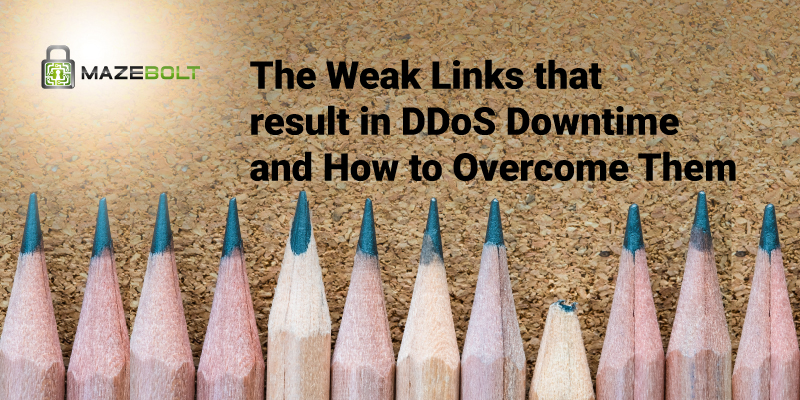DDoS attacks have become more common, powerful, and malicious. They have increased 2.5 times over the last 3 years, with the average size nearly reaching 1Gbps, powerful enough to take most organizations completely offline.
DDoS on the Rise
From Netflix to Twitter, Wikipedia to international banks, and gaming and gambling sites, DDoS attacks have not spared any industry segment. The 2018 GitHub DDoS attack got much attention when a sudden record-breaking onslaught of traffic clocked in at 1.35 terabits per second. GitHub’s mitigation system was able to eventually stop the attack, but the site suffered downtime for nearly 20 minutes causing an outage. Eurobet, an online sports gambling website, suffered an attack that persisted for days and impacted several other betting networks. The world’s largest and best online poker room Winamax was forced to cancel the €1 million guaranteed Million Circus KO event.
In November, last year, Britain’s Labour Party was attacked. The attacks interfered with party websites and slowed campaign activities. When AWS was attacked in 2019, it suffered an immeasurable loss in customer trust by failing to meet SLA standards.
No Exceptions to the Rule
Although the stats may make some of us feel that attacks are limited to `certain types’ of enterprises, the alarming truth is that nine in 10 businesses claimed to have experienced an attack, with an average downtime of 30 minutes in 2018 . For those who take comfort from the fact that their respective enterprises have never suffered an attack, this may be the time to sit up and take notice. All it takes is one single attack to bring an entire system down.
Gartner estimates that a single minute of downtime costs most businesses $5,600, or more than $300,000 per hour. Monetary losses, operational challenges, and loss of customer trust are the side effects of DDoS attacks.
The Weak Links
To prevent DDoS attacks, enterprises, both small and large have likely invested in one or the other mitigation solutions:
- Scrubbing Center (BGP) – Sophisticated multi-layer attacks require a granular capability for detecting and blocking attacks which scrubbing centers are not always efficient at adapting to.
- Content Delivery Network (CDN) – A CDN can only be a part of a bigger DDoS mitigation scheme. Usually, more advanced attackers can find and attack the source IP of the website directly, circumventing the CDN completely.
- Vendor Appliances (CPE Equipment) – CPE equipment without a scrubbing center will not protect against large volumetric attacks and will not provide protection against internet pipe saturation.
- Intrusion Detection System/Intrusion Prevention System – Layer 7 attacks that use encryption can bypass the signature or behavior-based protection an IPS offers. In general, IPS systems are not designed the withstand the high load entailed by a DDoS attack.
- Web Application Firewall- Vulnerable to high load and because of their stateful nature, DDoS and other high load situations may create downtime with WAFs.
Unfortunately, no single DDoS Mitigation system is foolproof. Experience indicates that even with a leading DDoS mitigation system, 65% of enterprises experience significant downtime within any 12-month period.
This is because DDoS Mitigation solutions analyze legitimate incoming traffic and pass it on to the requested destination IP. When an attack bypasses the defenses, only then can it be analyzed and inputted into the solution for future mitigation.
MazeBolt’s new technology continuously & without disruption, detects DDoS risks before an attack happens, not after. Working with any mitigation system to provide end-to-end full coverage.
DDoS RADAR™ Unique Features
- The only 24/7 continuous DDoS vulnerabilities detection
- Real-time, non-disruptive, and does not require a maintenance window
- Works with any DDoS Mitigation technology
- Complete attack surface coverage
- EU and US granted Method Patent.
About MazeBolt
MazeBolt is an innovation leader in cybersecurity and part of the DDoS mitigation space. Offering full DDoS risk detection and elimination and working with any mitigation system to provide end-to-end full coverage. Supporting organizations in avoiding downtime and closing DDoS vulnerabilities before an attack happens.


